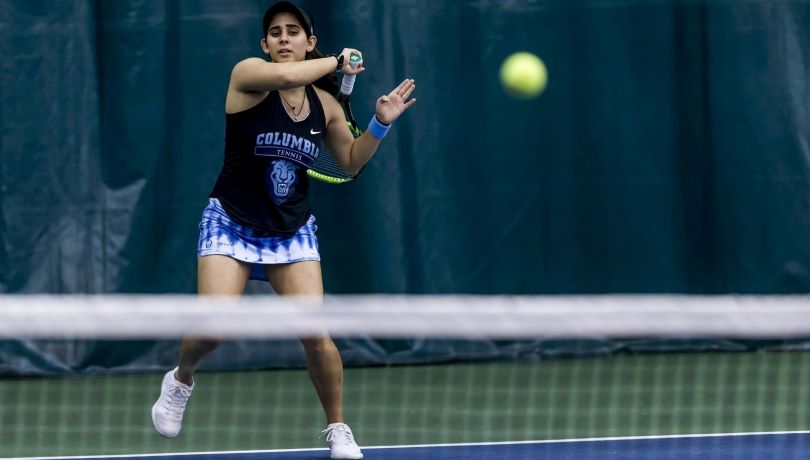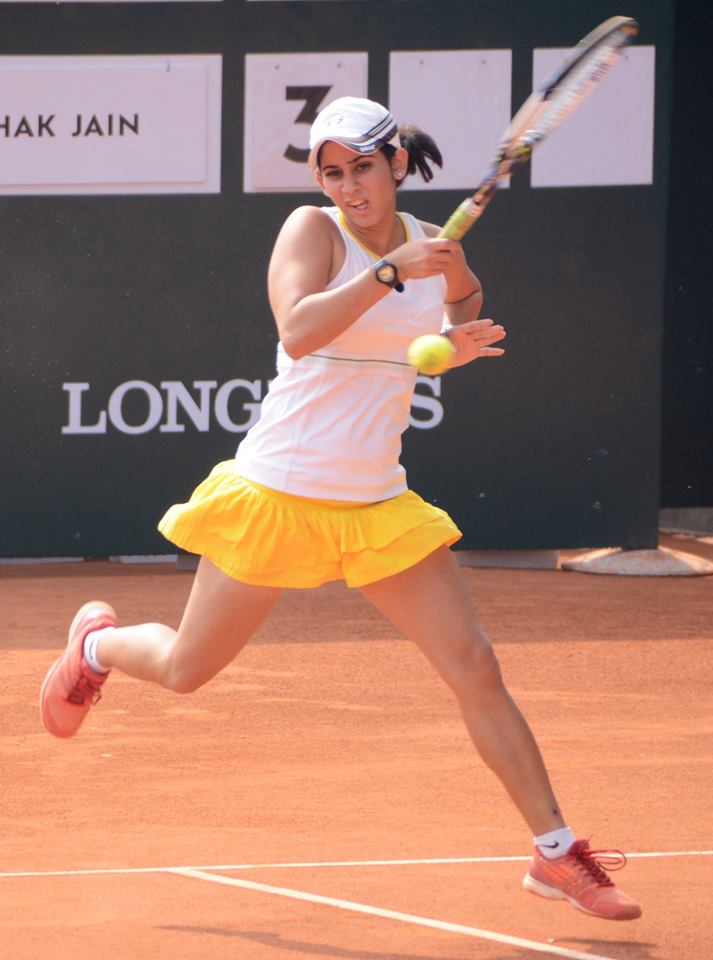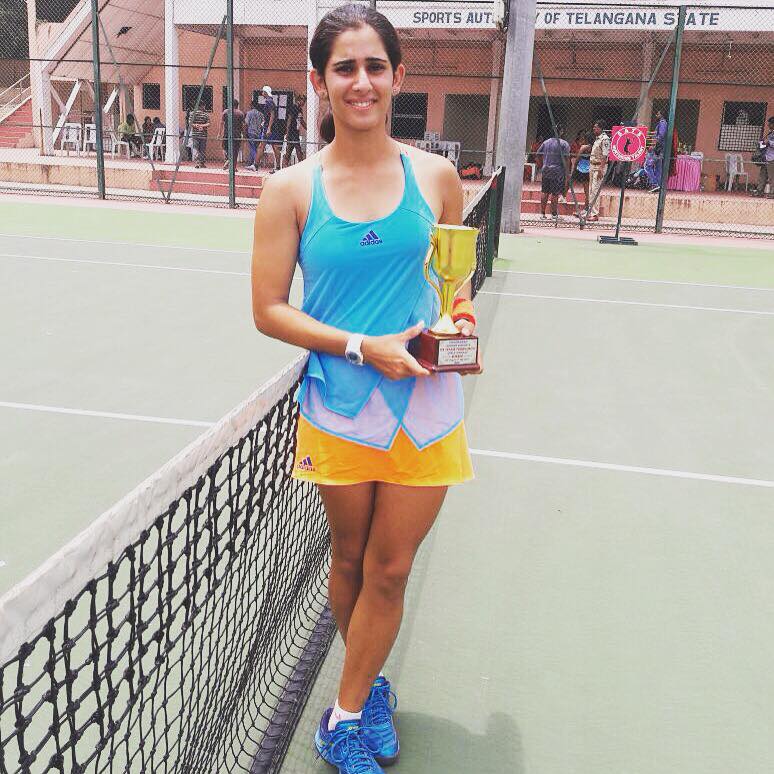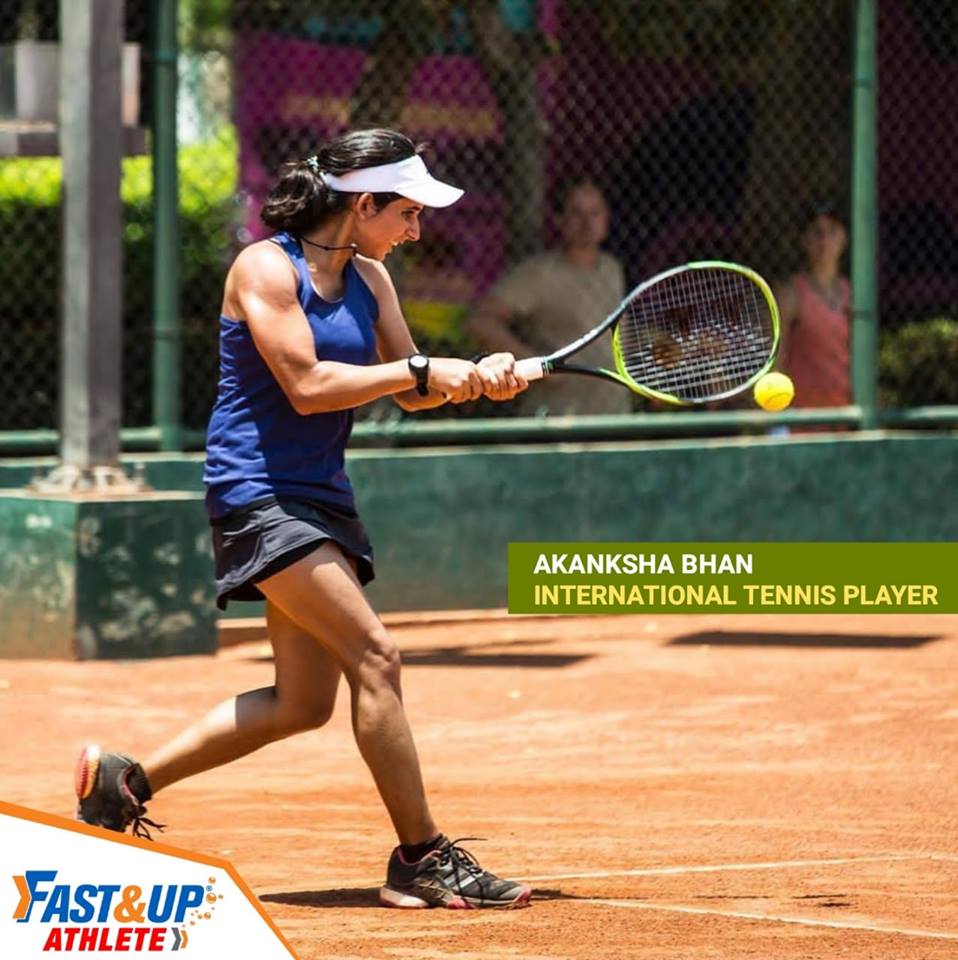Featured
Rising tennis star Akanksha Bhan: One for the future

Former National No.1 in the U-18 category, Akanksha Bhan has been making India proud at the other end of the world. Akanksha ended her run on the juniors’ circuit with a combined high ranking of No. 110. She had made it to the main draw of the Australian Open in the juniors’ singles category back in 2018.
Unlike most other players on tour, Akanksha has taken a different path in her transition to the pro circuit. The 2016 Fenesta National Juniors Champion set herself up on course for the American Collegiate Tennis during the tail of the 2018 season. Channelling herself on this unconventional route of turning into a pro, Akanksha already has gained some highly impressive wins representing Columbia University in the State of New York. She is currently pursuing Economics from the same university.
Akanksha, a fresher at Columbia and the USA Collegiate Tennis, recently won the Second Team Honor in All-Ivy Women's Tennis Postseason Awards in both the singles and doubles category. The Bridge got in touch with the roaring lion following her successful start at the American Collegiate Tennis.

Q. Akanksha, first of all congratulations on a successful start on your road to gain the ranks on the senior circuit. You recently won the Second Team Honor in the All-Ivy Postseason Awards. To explain the vitality of this accolade to your Indian fans, can you please first explain how the American Collegiate Tennis is structured and why you decided to choose this path? Additionally, can you explain in the process how this will help you go pro?
Thank you, its been wonderful. So the American Collegiate Tennis is structured in terms of conferences according to regions, for example, the Ivy League conference that Columbia is a part of along with other Ivy League schools. Each team plays each other to decide the winner of the conference and the winner of each conference gets an automatic bid into the National Collegiate Athletic Association (NCAA) Championship, which is a national level championship administered by the NCAA. Each team has three doubles teams and six singles players in order of the quality of their game. I played at first place for doubles and second in the singles line-up, which provided me with ample opportunity to play good matches against high-level womens’ players and enhance my skills to help me compete at a professional level. I chose this path especially so I could receive an excellent education along with playing in the big leagues.
Q. What is the biggest difference you felt while shifting from the ITF Juniors Circuit to the American Collegiate tennis?
Tennis is an individual sport in general so the biggest change was adapting to the team atmosphere. I am not just playing for myself anymore but for the entire team.
Q. Should it be mandatory for every Indian tennis player to go abroad and get the necessary training if in case he/she is striving to be a professional tennis player? If yes, is it because the courts and other necessary factors are not at par in India?
Yes, I think its necessary for the most part. Although we have had foreign coaches showing interest in Indian tennis players recently, training abroad can play a vital role. I think the fitness and dietary regimens lack the most in Indian tennis players, which are more focused upon when training abroad. American Collegiate Tennis can be a good choice in this comparison as you acquire these elements alongside your academics.
Q. Can you list out the major pros and cons of the Indian juniors’ tennis circuit?
The major pro is that most top 10-20 players are broadly of the same level, making them stronger to compete internationally. However, a surprisingly large number of players play copious tournaments instead of playing an adequate number of good tournaments and performing well, draining themselves during the junior circuit itself. It’s a serious con as it leads to injuries, inability to compete or pursue a professional career in tennis.

Q. On a scale of 1 to 10 (10 being the highest), how would you rate the support of the Indian Government in funding Indian tennis players?
6
Q. When you were up and rising as a tennis player, did you face any objections or criticisms from the society? How did you tackle those situations?
I faced the typical desi (for ease of conveying emotion) stereotype, that its just a hobby and not a career prospect because that’s just possible through either medicine or engineering. Fortunately, I always had my family’s support in pursuing what I wanted to so it never bothered me.
Q. Since you have very recently exited the juniors circuit and are now ushering into the seniors, what are your views regarding women and 5-sets debate?
I understand it can be physically tough for women to play best of 5 sets in extreme weather conditions like during the Australian Open, but I think we are ready and very much capable of playing 5-setters. However, I also agree with Billie Jean King, on her statement of “quality over quantity”.
Q. Name the various players whose attributes you would take to build your fantasy female player.
Serve: Serena Williams
Return: Novak Djokovic
Forehand: Naomi Osaka
Backhand: Simona Halep
Volley: Leander Paes
Drop Shot: Caroline Garcia
Agility: Simona Halep
Q. Who is the toughest opponent you have faced thus far in your career?
Joanna Garland, Taipei (Main draw 1st round, Australian Open Junior Championships)
Q. Of all the tennis tournaments you have played so far, which one is your favorite?
Australian Open Junior Championships
Q. If not a tennis player than you would be?
Financial Analyst
Q. A player whose fashion style you adore the most.
Maria Sharapova, hands down.
Q. The quote you bank upon during a match?
“Fight for every point like your life depends on it.”
Q. One thing about you that most people do not know.
I am a board member of the first female student-athlete organization – Female Athletes Stand Together (FAST) – here at Columbia University.

Q. How have Fast&Up products helped you in your sporting career?
Fast&Up products have provided me with the necessary fuel one needs as a tennis player specifically. from hydrating before my match, maintaining my energy level throughout the match, to recovering post matches, Fast&Up has been a major contributor.
Q. When are you planning to return to the ITF circuit?
I may be playing a few tournaments over this summer but will actively play after I graduate from Columbia in 2022.






